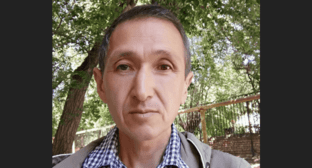02 June 2003, 02:56
Ossetins
They call themselves eron, digoron. They are the main population of the Republic North Ossetia-Alania (within the Russian Federation) and of South Ossetia, they also live in some districts of Georgia, Kabardino-Balkaria, Stavropol territory of the Russian Federation, Karachaevo-Cherkessk Republic. Their total population in Russia is about 402 thousand people (1989), including 299 thousand in the north Ossetia; about 160 thousand in Georgia including 65 thousand people in South Ossetia.
The main sub-ethnic groups: Erons and Digors (in the west of North Osetia). They belong to the Balkan-Caucasus race of the big European race. They speak the Ossetin language of the Iran group of the Indo-European family. The language has two dialects: Eron (was the base of the literary language) and Digor. The literacy (since the 19th century) is based on the Russian alphabet. The believers are Orthodox, some are Moslems.
The forming of the nation is connected with the aboriginal population of the North Caucasus (the creators of the Koban culture) and with the coming Iran-language peoples - Scythians, Sarmats and especially Alans (since the 1st century AD). The latter settled in the Central Caucasus and the native population adopted their language and many features of culture. There formed a powerful union of Alans (they are called Os in Georgian and As in Russian Medieval sources), this put the beginning of forming Ossetin nationality. In the 13th century the early feudal Alan state was defeated by the Mongols-Tatars, Alans were pushed from the fertile valleys to the South, to the mountain canyons of Central Caucasus. On its northern slopes there appeared 4 big ?Societies? with tribal division (Digor, Alagir, Kurtatin, Tagaur), on the southern slopes - a lot of smaller ?societies? that were dependent of Georgian feudal lords. In 1774 North Ossetia willingly joined Russia, in 1801 South Ossetia did the same being part of Georgia. This stopped the tribal and feudal division among the Ossetins and finished the forming of Ossetin nation. In the end of the 18th - 19th century part of the Ossetins started to move to the valleys. The grounds given to Ossetins by the tsar?s government, were mainly received by the Ossetin feudal lords. After the October revolution of 1917 Ossetins received all the rights for the grounds they used; lots of Ossetins moved to the valleys. On the 20th of April 1922 there was formed the South-Ossetin Autonomous District within the Georgian Soviet Socialist Republic, in 1924 - the North-Ossetin Autonomous District, 0n the 5th of December of 1936 it became the North-Ossetin Autonomous Soviet Socialist Republic within the Russian Soviet Federative Socialist Republic. The South-Ossetin Autonomous District within Georgia was abolished in December 1990 since the authorities of South-Ossetia declared that instead of an Autonomous District it becomes a republic within Georgia. This was one of the reasons of the conflict between Georgia and Ossetia. The North-Ossetin Autonomous Soviet Socialist Republic within Russia became the Republic of North Ossetia-Alania.
The main traditional occupation in the valley was agriculture (wheat, corn, millet, barley etc.). In the mountains together with agriculture there was developed the cattle-breeding (sheep, goats, cattle). Traditional system of agriculture in the valley is the three-field system. The main instrument in the mountains - a plough with an iron shovel carried by a couple of oxen, in the valley - a heavy plough carried by up to eight oxen. Home trades and crafts were well developed - making broadcloth, sheepskin, furniture, dishes, carving wood and stone, smith?s work, jewelry, embroidery etc.
Traditional settlements in the mountains (kau) - are small, of cumulate or row planning, in the valleys they are bigger, with street planning. The Main construction material is stone, in canyons with forests - wood. The houses have one or two floors (the first floor is for the cattle), the roofs are flat and earthen. Inside the walls were covered with clay, they were whitewashed when there appeared stoves with chimneys. The floor was earthen. The windows were rectangular and small. In the houses there were many rooms for a big family. The dining room was connected to the kitchen, had an open hearth with a chain over it (this and the central bearing pole holding the roof were considered sacred) and was divided into the male and female halves. They made a special room for the guests - kunatskaya. There are monuments of traditional architecture - multi-tiered (3, 5 and more tiers) military towers, castles (galuans), the living towers of two and three tiers, different vaulted constructions, pagan temples (dzuar). In the South Ossetia there are houses with a covered terrace and a four-slope roof, the first floor was made of stone, the second - of wood. The poorer Ossetins lived in turluk (wicker) and adobe houses roofed with straw and reeds.
Traditional male costume - cherkeska with silver decorations, beshmet, shirt, trousers, burka, sheepskin coat. The head gear - stockings, high boots, boots made of leather, morocco or felt. A dagger is a compulsory part of the male costume. Until the 19th century the everyday female clothes was nearly similar in cut to that of the men. When the elements of Russian culture penetrated, it became more diverse. The long holiday dress had a long cut in front and long sleeve covers, under it there was a silk skirt; they wore a short apron with a wide belt. The dress was adorned with gilded silver decorations (breast plates) and applique work sewn on it. The round velvet hat (wedding) was covered with a light open-work kerchief.
Traditional food is similar to that of the other peoples of the Caucasus; there prevailed the sour milk products, pies with meat, cheese, beans. The drinks: kvass, beer.
Ossetins kept traditional institutions (remnants of the tribal division, mutual help of the members of the tribe, patriarchal society etc.) and traditions (exogamy, common justice etc.). Most of the Ossetins were Orthodox, Christianity penetrated in the 6-7th century from Byzantium, later from Georgia, since the 18th century from Georgia; the minority are Moslems (Islam came in the 17-18th century from Kabardins); there retained the pagan beliefs and rites. Among the different genres of folklore noteworthy are the Nart epic stories, heroic songs, legends and weeping songs.




